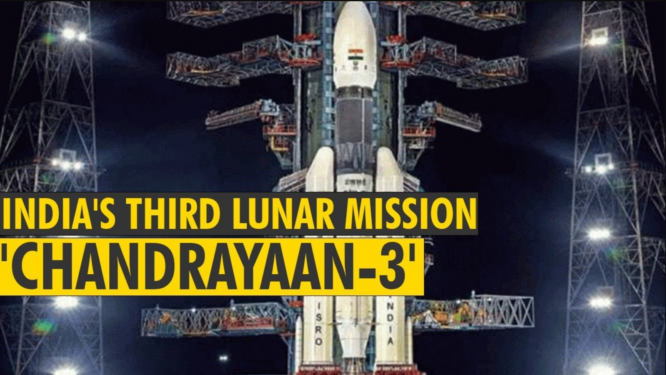The Chandrayaan-3 mission to the Moon will be launched by the Indian Space Research Organization (Isro). According to IndiaToday.in, the satellite has arrived at the Satish Dhawan Space Centre in Sriharikota.
The ambitious lunar mission will shortly be combined with India’s most powerful rocket, the Geosynchronous Satellite Launch Vehicle Mark-III (GSLV Mk-III), in preparation for a July launch to the Moon.
“The launch of Chandrayaan-3 is scheduled for the month of July. We aim to launch it in July during the time period determined by its orbital parameters, and we are working toward that goal. After the successful launch of the GSLVF12 mission on Monday, Isro chairman S Somnath declared, “Everything is coming together.”
India is set to launch Chandrayaan 3 in July

He added, “This time we will definitely land, as we have made all the corrections we could imagine and run all the simulations that could go awry. If there are any uncertainties, we will not launch.”
A senior ISRO official stated, “Chandrayaan-3 has arrived at Sriharikota, and we are about to begin integrating it with the launch vehicle in preparation for its launch to the Moon.”
The Indian space agency has stated that the lander will be able to perform a gentle landing at a designated lunar location and then deploy the rover, which will conduct in-situ chemical analysis of the lunar surface during its mobility.
ISRO will repurpose the Chandrayaan-2 Orbiter launched in 2018 for use with Chandrayaan-3. The 2018-launched Chandryaan-2 mission was a novel combination of three distinct systems: an orbiter, a lander, and a rover.
Chandra’s Surface Thermophysical Experiment will measure the thermal conductivity and temperature of the Moon’s surface, while the Instrument for Lunar Seismic Activity will estimate the seismicity around the landing site, and the Langmuir Probe will calculate the plasma density and its variations.
In contrast, the rover will be equipped with the Alpha Particle X-ray Spectrometer and the Laser-Induced Breakdown Spectroscopy instrument to determine the elemental composition near the landing site.

